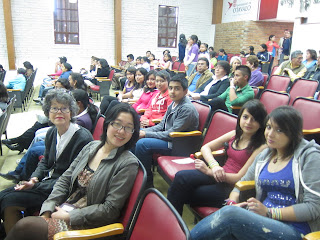Download the attached files
Using one
sentence to summarize this course—“it is more than second language writing, but
sociopolitical issues related literacy development.” I admit that before taking
this course, I viewed teaching second language writing as designing learning
topics, choosing materials, and giving feedback to students’ papers. In other
words, I took writing not so much as a skill, though I knew it was tightly
connected to listening, reading, and speaking. However, this class turned my
perception of writing to be a set of political issues correlating with power.
The
first project was a literacy biography (please refer to the attachment literacy
biography). Before doing this project, I nearly forgot that becoming able to
read and write was such a heavy, painful, self digging and identity
constructing process, I have experienced the processes twice: learning how to
read and write in Mandarin and English. This project still reminds me always
put myself in ESL/EFL learners’ shoes to understand their struggle in their literacy
development.
Another
project was an observation in the writing center (please refer to the
attachment—reflective tutoring observation). Because of the observation, I
learned that the center’s structuring tutoring process was not so natural and
simple. It implied the center’s defining of “what is good writing,” but it was
not necessarily consistent with expectations of instructors or literacy research.
The
final project was a combination of philosophy of literacy and a lesson plan
(please refer to the file named philosophy of literacy). By the end of this
class, the emotional reactions toward literacy development were refined with
the theoretical knowledge. In this philosophy I articulated my feeling which intertwined
with the scientific concepts, and they were applied in the lesson plan.
Because
of these projects and the issues explored in this class, I came to a whole new,
more complicated understanding toward teaching writing. I decided that if I
have a chance to teach writing, I will not present a “perfect” model of writing
for my students to pursue, but encourage them to develop repertoire which will
help them communicate effectively in different genres.
























